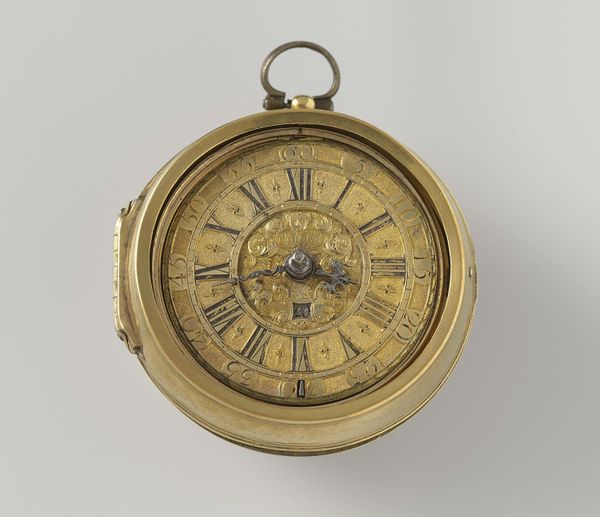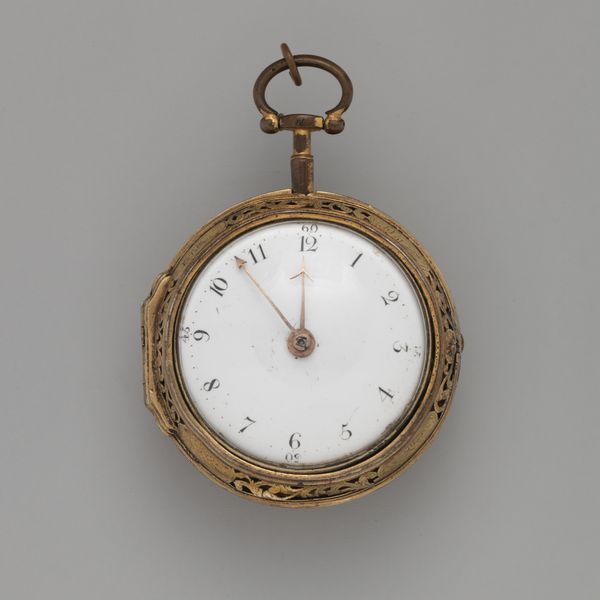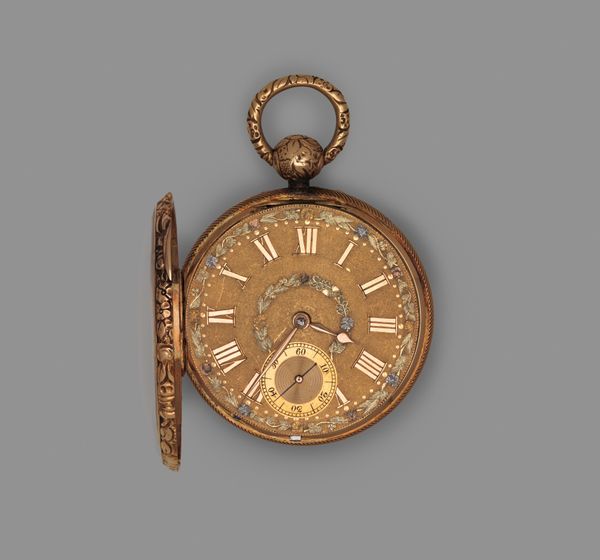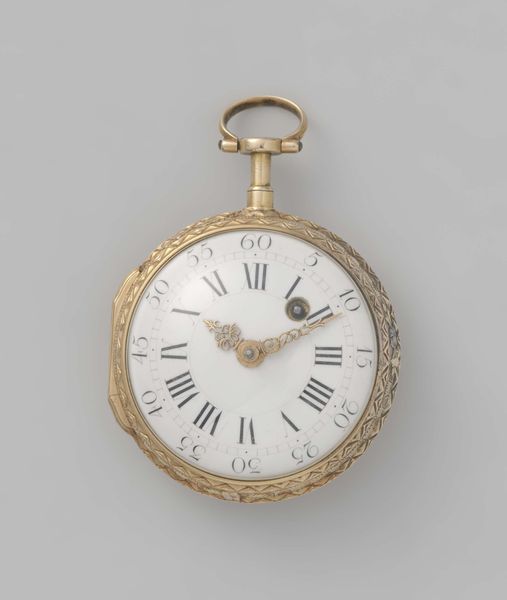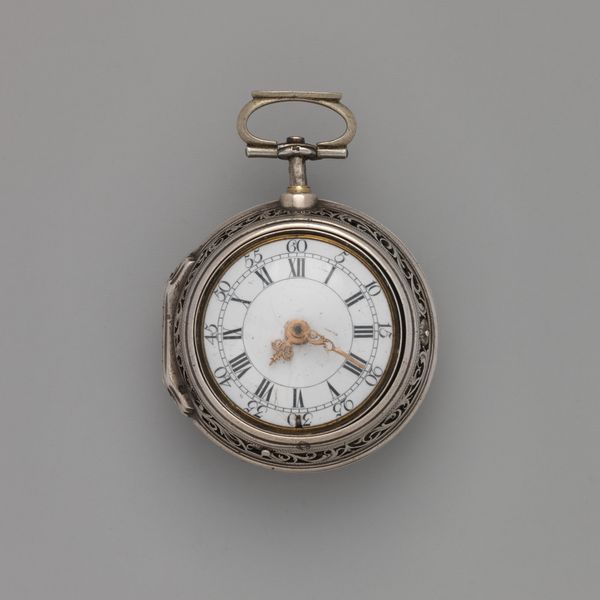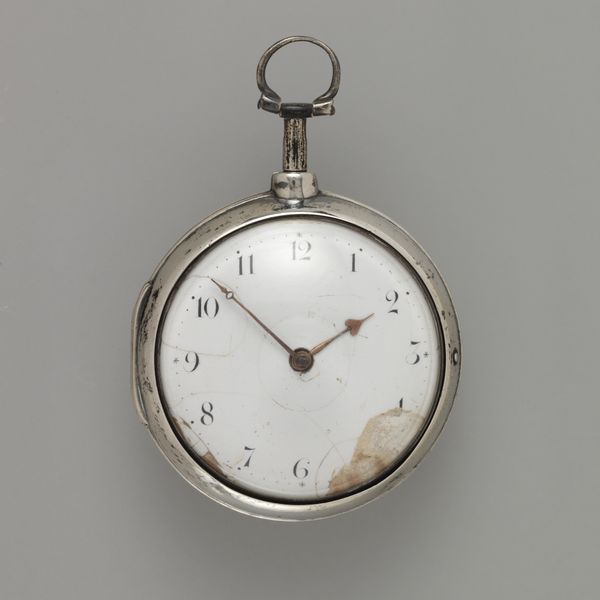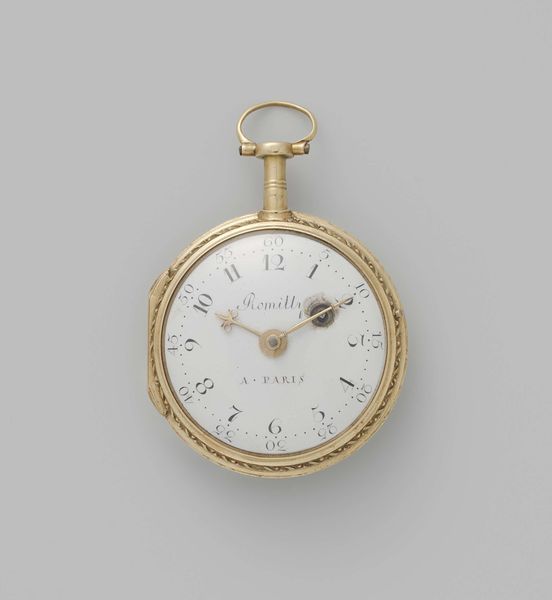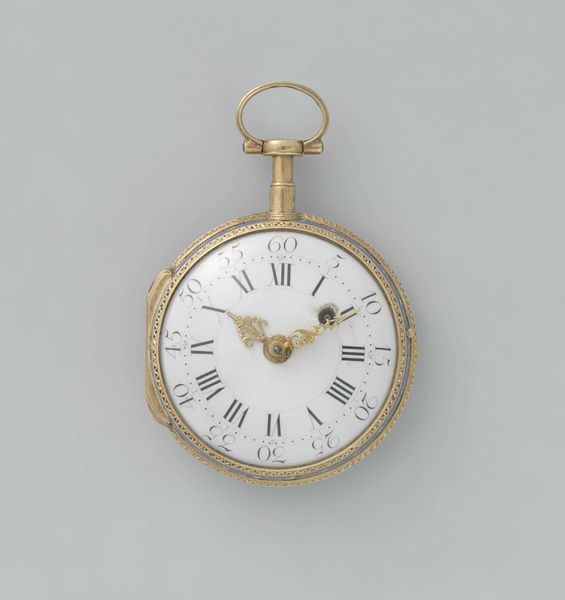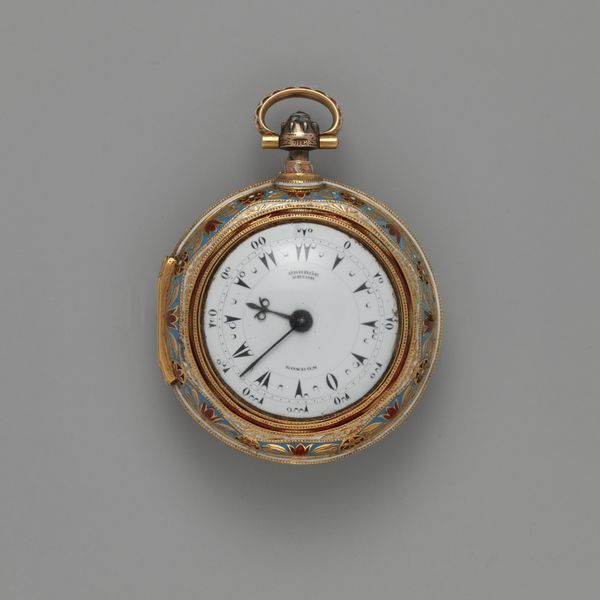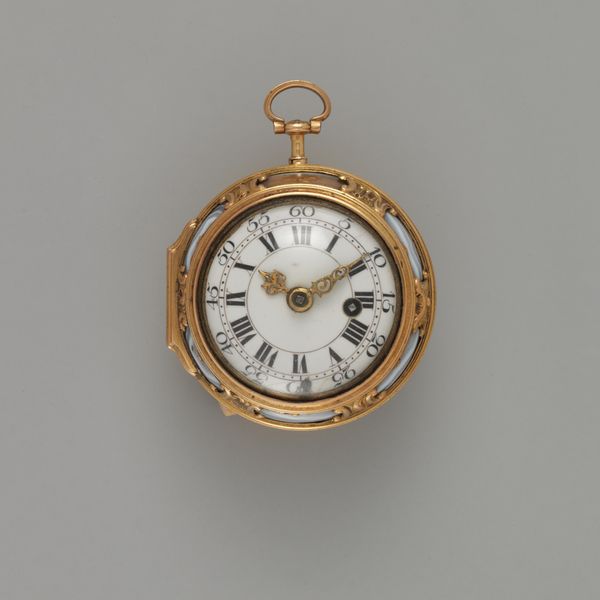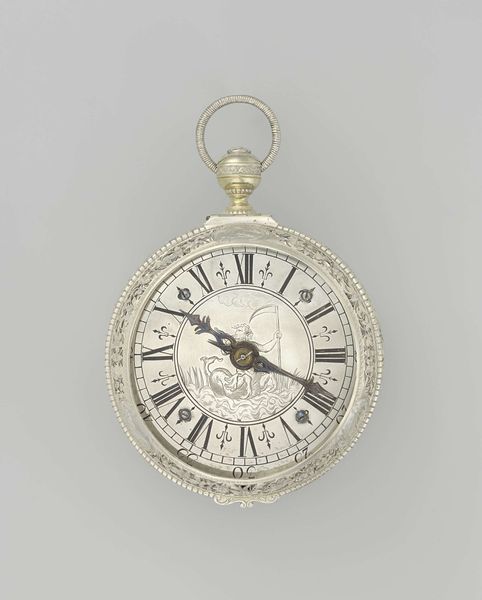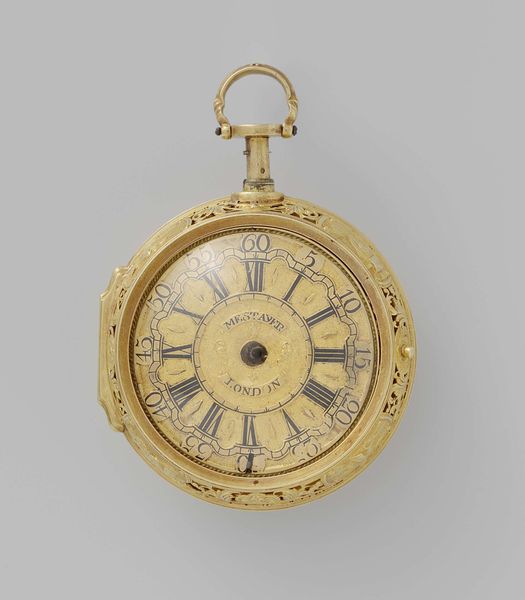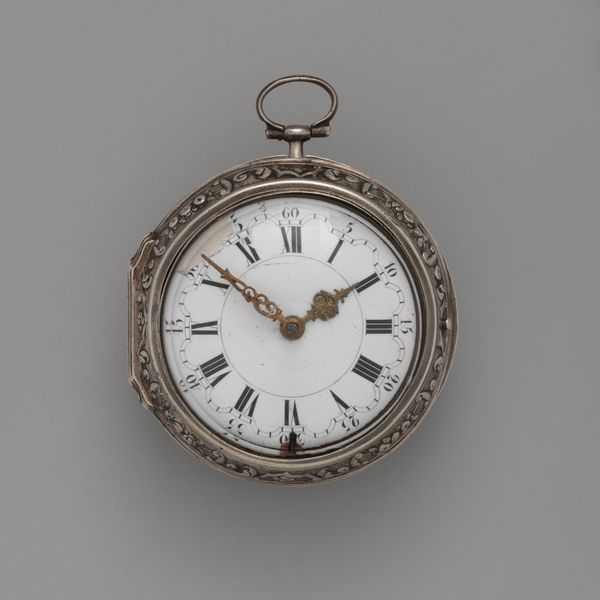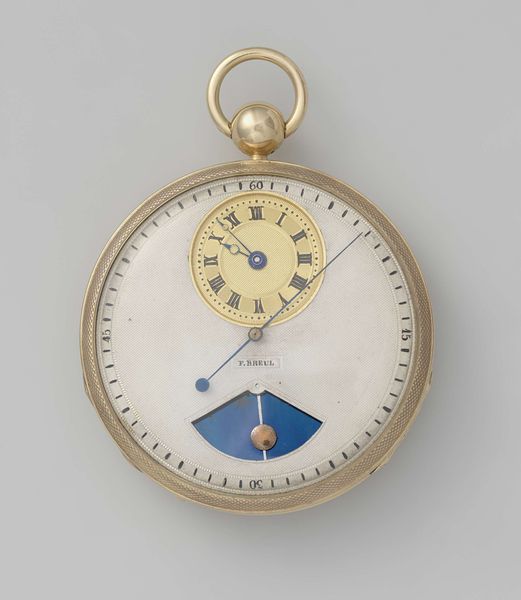
metal, sculpture
#
metal
#
sculpture
#
decorative-art
Dimensions: Diameter: 2 in. (5.1 cm)
Copyright: Public Domain
Editor: Here we have a pocket watch made of metal, dating back to sometime between 1800 and 1815. The watch's golden sheen and delicate craftsmanship give it a sense of old-world luxury. It really makes you wonder who it belonged to. What can you tell me about this particular watch and its cultural context? Curator: Absolutely. This watch, beyond its aesthetic appeal, speaks volumes about power dynamics and societal structures. Ask yourself, who during that era, particularly in the context of nascent industrial capitalism, had access to such refined time-keeping devices? This was not a tool for the working class. Editor: It’s interesting to think about who possessed it, because it really is beautiful. Were timepieces like these symbolic objects in the early 19th century? Curator: Indeed. The ownership of a watch, especially one so finely crafted, signified more than punctuality. It symbolized control, not only over one’s schedule but also over labor, resources, and even the perception of time itself. Consider how industrialized societies began imposing rigid temporal structures on workers – factory bells, shifts, regulated breaks. Owning a watch like this distanced the owner from that very control exerted over the working class. Editor: That’s a fascinating connection I hadn’t considered. It makes me rethink my initial appreciation, understanding now the socioeconomic implications embedded in this object. Curator: Precisely. It compels us to critically analyze objects through an intersectional lens. We see how race, class, and gender all intersect in the story of access, ownership, and symbolic capital this timepiece represents. Editor: I see that luxury items of the past are relics, filled with messages from their original society, not only related to craft or aesthetics. It definitely made me think critically! Curator: And critical thought, always focused on diverse and intersectional understandings, is what reveals our shared yet inequitable human past.
Comments
No comments
Be the first to comment and join the conversation on the ultimate creative platform.
